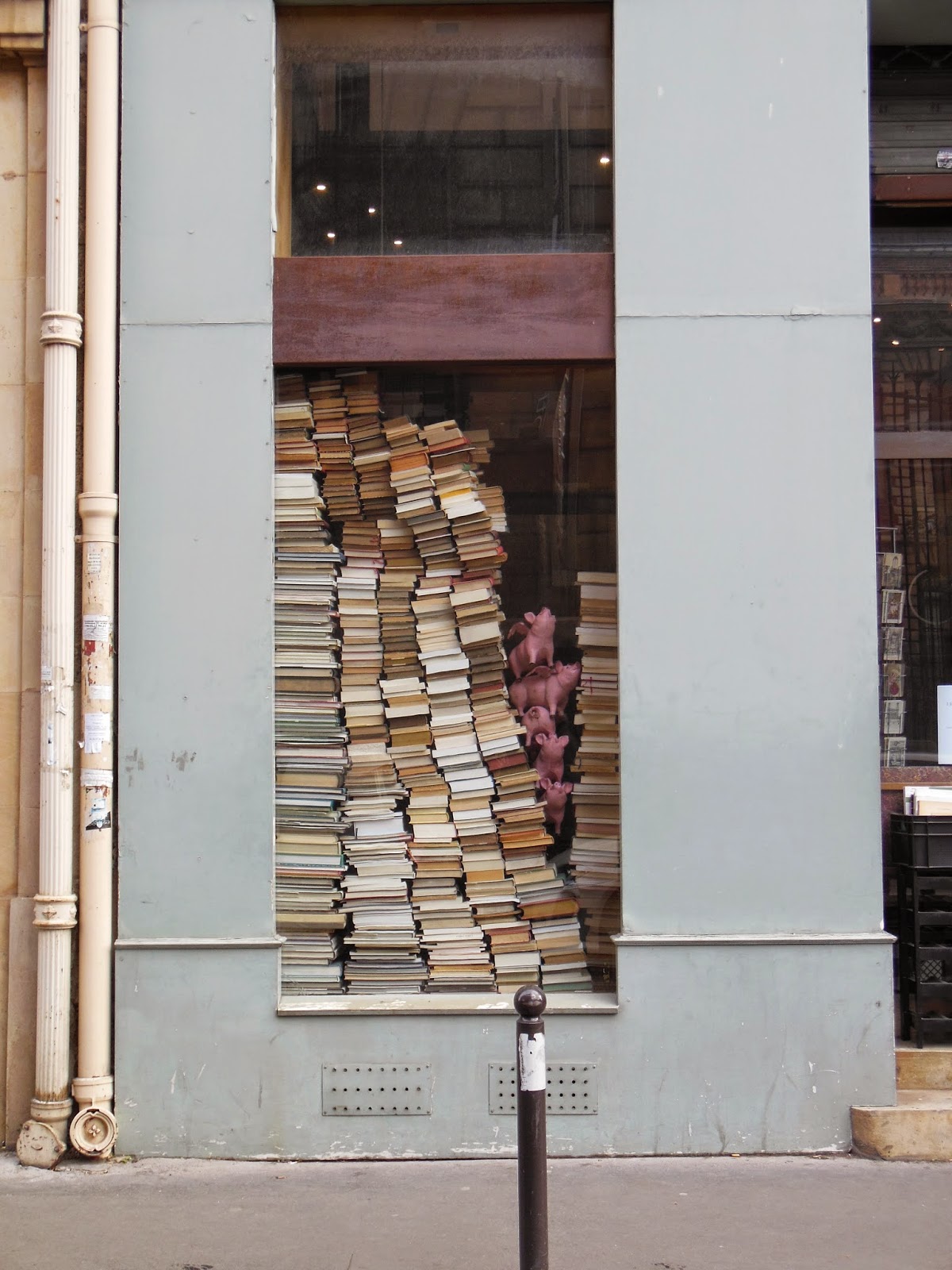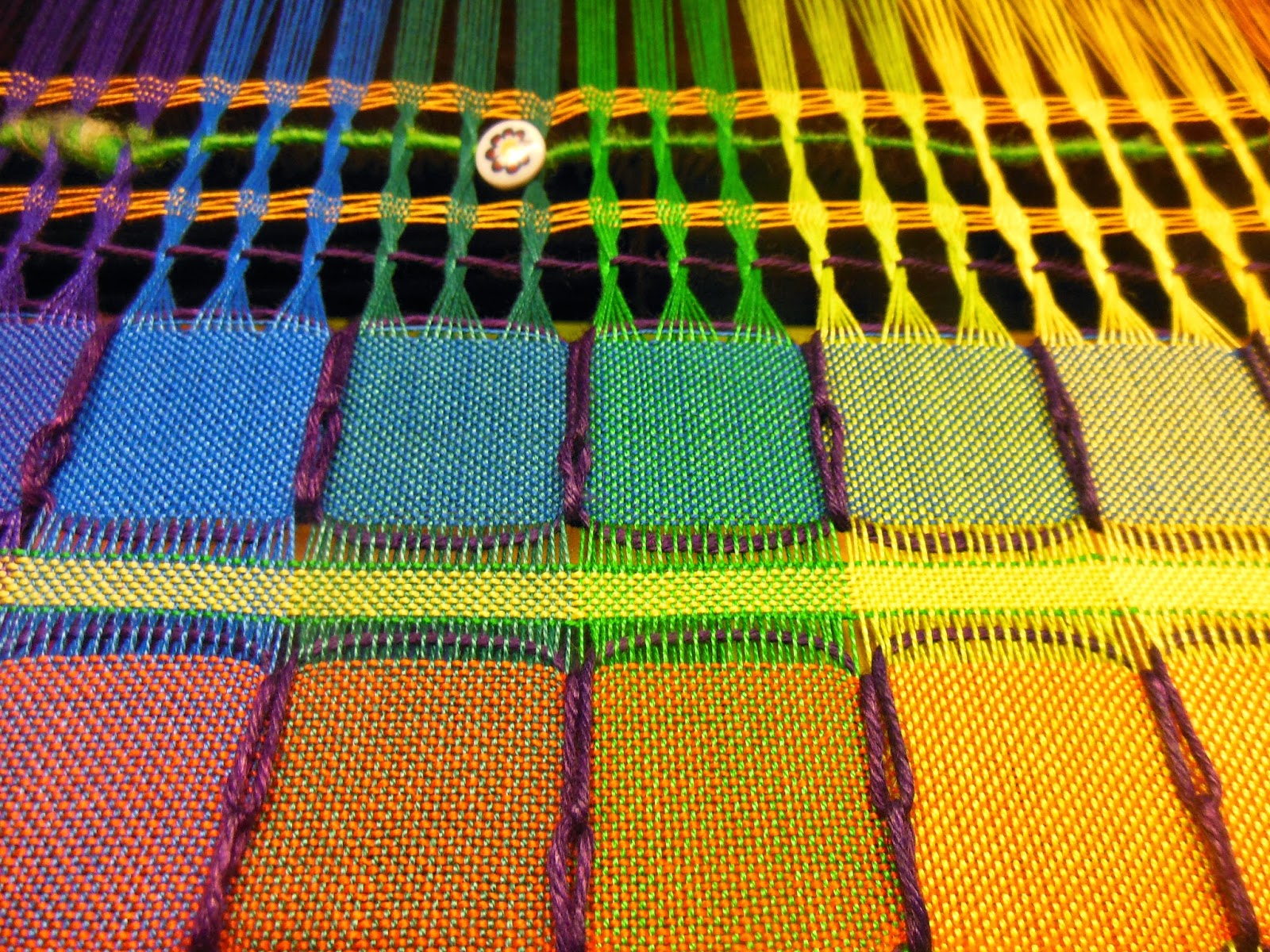There's nothing more pleasurable than warping the loom in hand-dyed silk. Using the warping wheel, I put on a longish warp of the 2/16 silk that I dyed over the course of the last year. As the photo shows, I used gradual colour shifts to move from the most intense colour at the edges and the brightest near the middle, in order to create luminosity.
I warped the full width of the 60-inch sectional beam. (Solveig at Ulla Cyrus made me this beam last year and DHL'd it to me. It has a simple, ingenious structure and smells of Swedish pine.)
I'm one of those people who loves threading the loom. I do this in total silence and with complete concentration. Threading takes quite a long time, but that's ok, because the time passes unnoticed, as the task requires total absorption.
I threaded it in blocks on 6 shafts, without counting or measuring anything, but with the vague goal of making honeycomb. Here is how some of the objects turned out:
And some details:
As you can see, I used some of the Knitting Hamster yarns to achieve dramatic lumps and curves. Here is some of their yarn, before the shed munched it up:
I wove these tapestries upside-down, with only a view of a few inches of fabric at a time. Here it is on the loom:
For another experiment with the same warp, I used many strands of 2/60 silk in the weft, separated by walls of dark wool. I loved the way the long floats felt.
Here's the finished object and two details:

















































